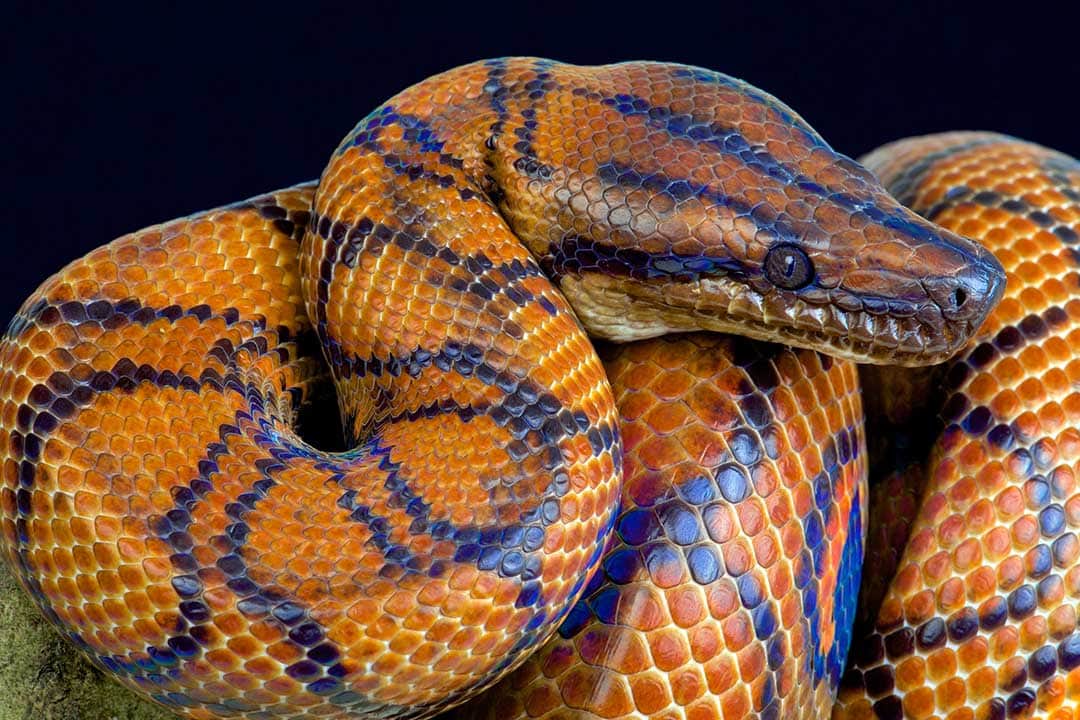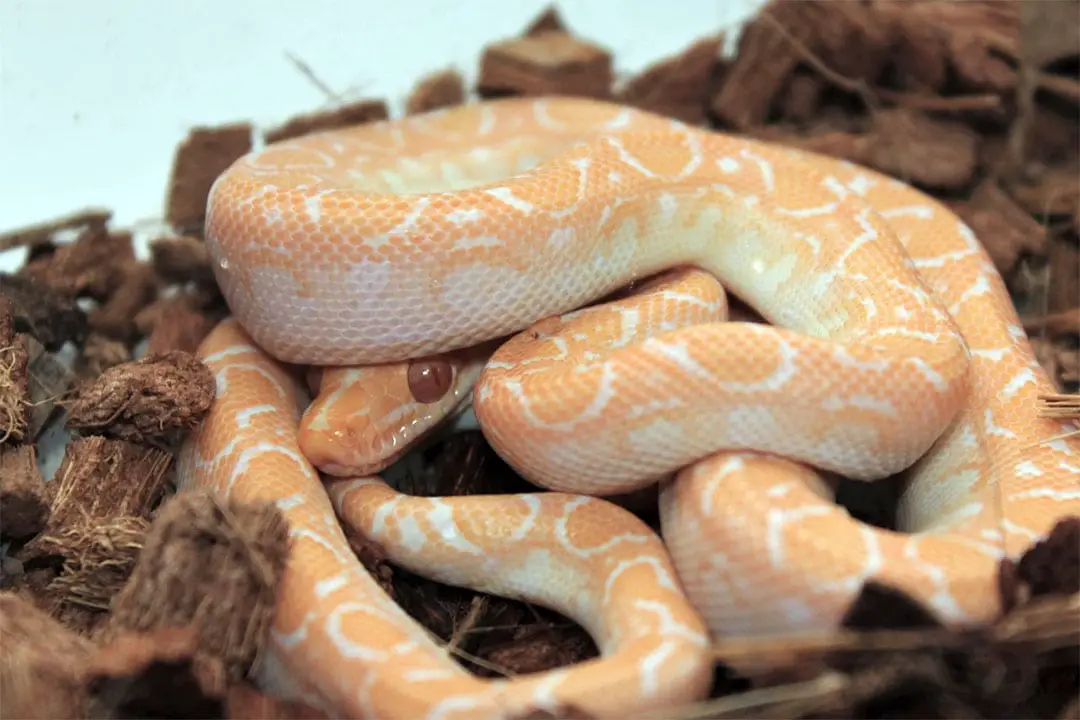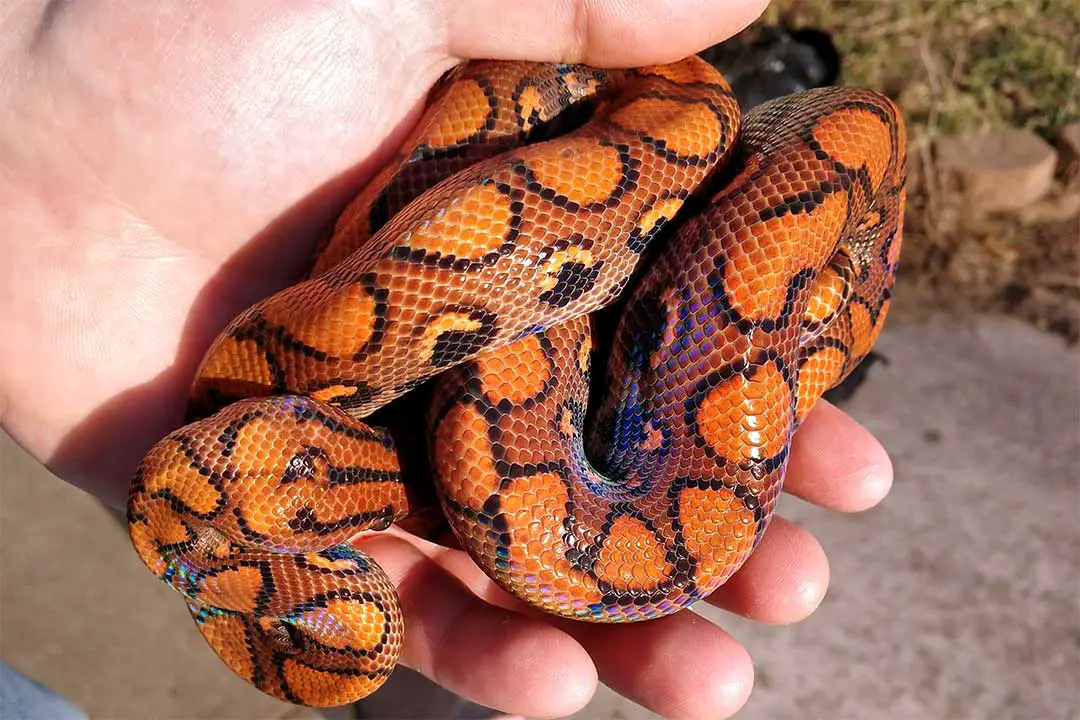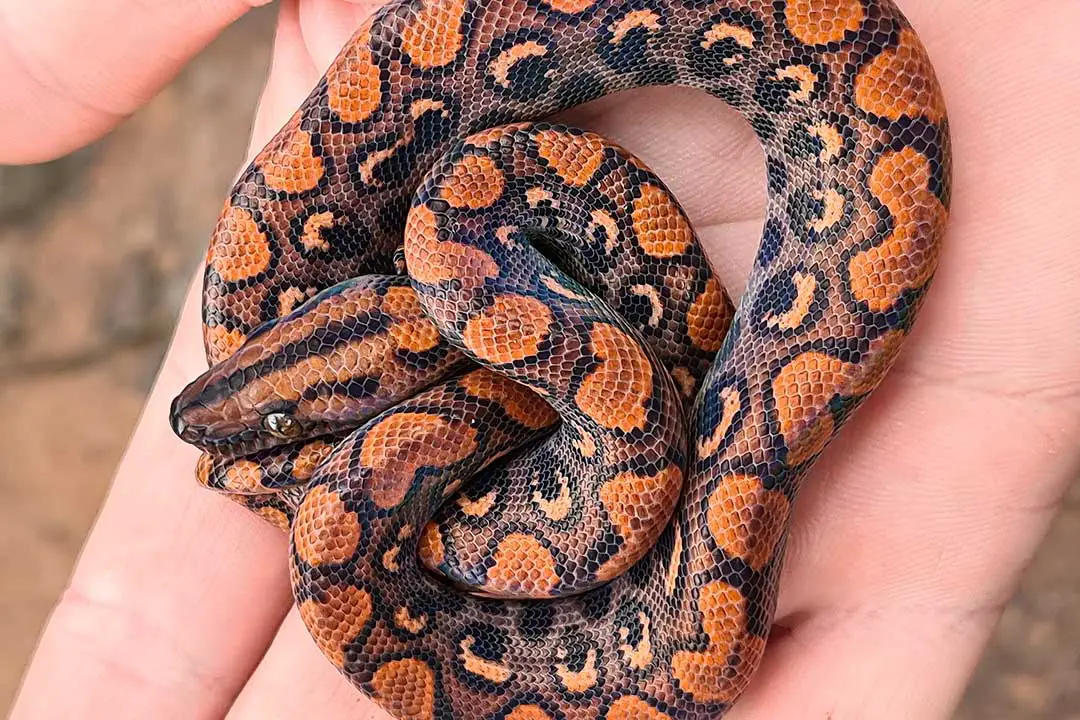The Brazilian rainbow boa (Epicrates cenchria) is a beautiful snake that attracts attention thanks to its namesake scales.
These snakes are becoming more common in the pet trade and the prices are slowly lowering into the realms where the average potential owner can afford a snake.
If you love this species but have no snake experience, you may be wondering:
Is the Brazilian rainbow boa is a good beginner snake?
Brazilian rainbow boas can be kept by beginners, but the husbandry requirements can be hard if you don’t have experience with reptiles. They are considered to be intermediate snakes.
Difficulty Levels
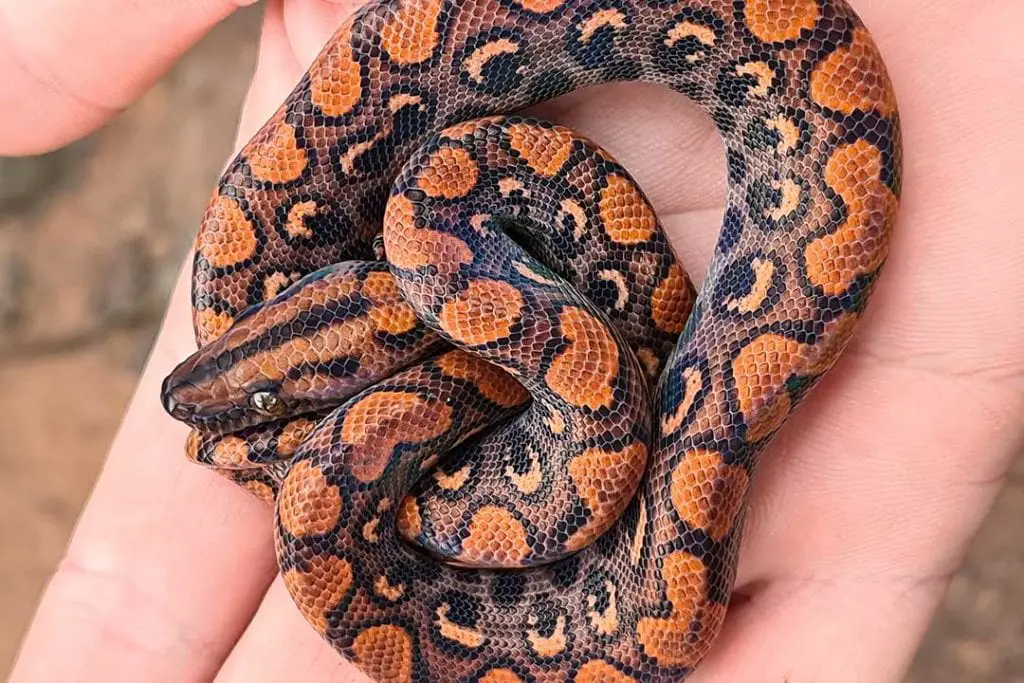
You may have seen difficulty ratings for different animals. This is based on how hard it is to keep a species happy and healthy in captivity. Domesticated animals are typically easier, but you still need some knowledge base to keep them.
For reptiles, the ratings are based on diet, care requirements, and temperament. An animal that needs a very narrow range of temperature or humidity is harder to keep than an animal that can tolerate some mistakes.
Some reptiles also have very specific diets or frequently go on feeding strikes that can be hard to break if you don’t understand the animal.
Nervous reptiles or ones that will lash out are also harder to keep if you don’t understand body language for that species. Larger animals need special enclosures and may be harder to handle.
Some animals like chameleons are so delicate that an inexperienced keeper can easily injure or kill their pet.
What Makes Brazilian Rainbow Boas Challenging
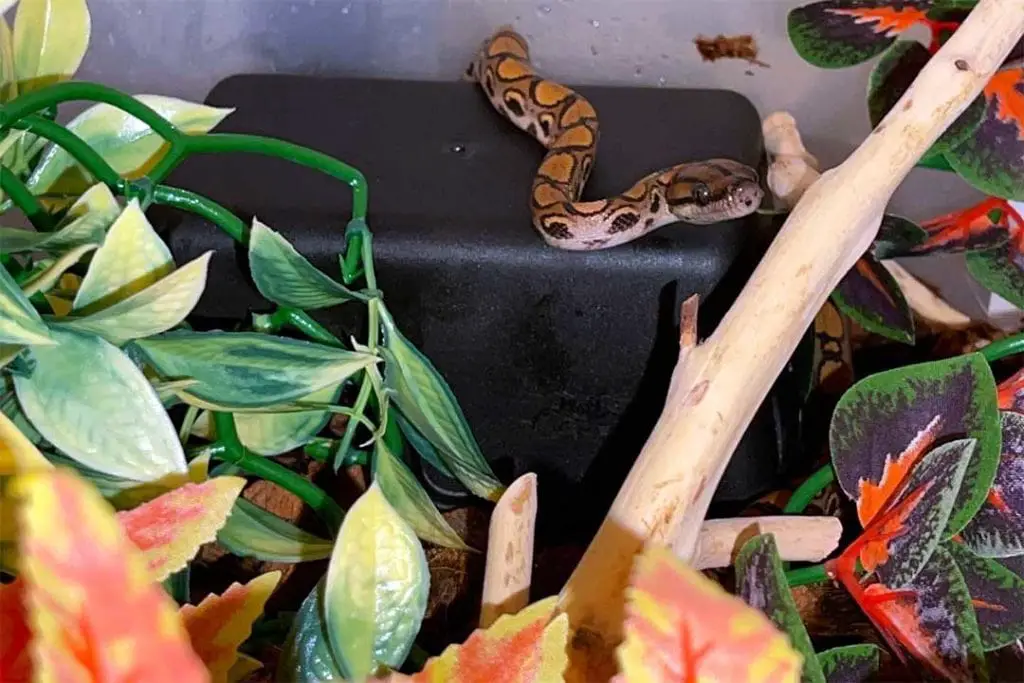
One of the biggest reasons that Brazilian rainbow boas are considered intermediate snakes is that they need a narrow range of temperature and humidity to stay healthy.
You need to understand how to monitor temperature and humidity and be prepared to verify in case your instruments break or give inaccurate readings. Brazilian rainbow boas cannot tolerate temperatures much higher than 90 degrees.
They will suffer and overheat faster than other reptiles if you aren’t careful.
You need a very accurate thermometer and a temperature gun to verify it. You should be checking that your thermometer is accurate a minimum of once a week.
Brazilian rainbow boas are also sensitive to dehydration.
In the wild, they rarely venture far from bodies of water to help avoid that fate. You need to keep the humidity up and offer plenty of clean water to your snake or it will suffer.
Many beginners make the mistake of trusting the cheap stick-on hygrometers and their snakes suffer for it.
You need the right enclosure to keep up humidity, a good digital hygrometer, a large water dish, and a damp hide available at all times. Poor humidity for a few days can seriously sicken or kill a rainbow boa. See my complete guide for Brazilian rainbow boa care requirements.
They are also very nippy when young. They will bite you, and if you are not prepared you may be discouraged from handling your snake.
They do tame down, but they need more patience. They also need a larger enclosure than the commonly recommended beginner snakes.
You absolutely must have the enclosure up and running before you get a Brazilian rainbow boa. You need to watch it for at least a week to make sure the temperatures and humidity are at the right levels.
This can be a bit much to ask for a beginner, even if it is best practice for all species of snakes in captivity. You also need to have a very strict daily schedule to stay on top of their health since they are delicate compared to something like a corn snake.
Why Brazilian Rainbow Boas Could Make a Good First Snake
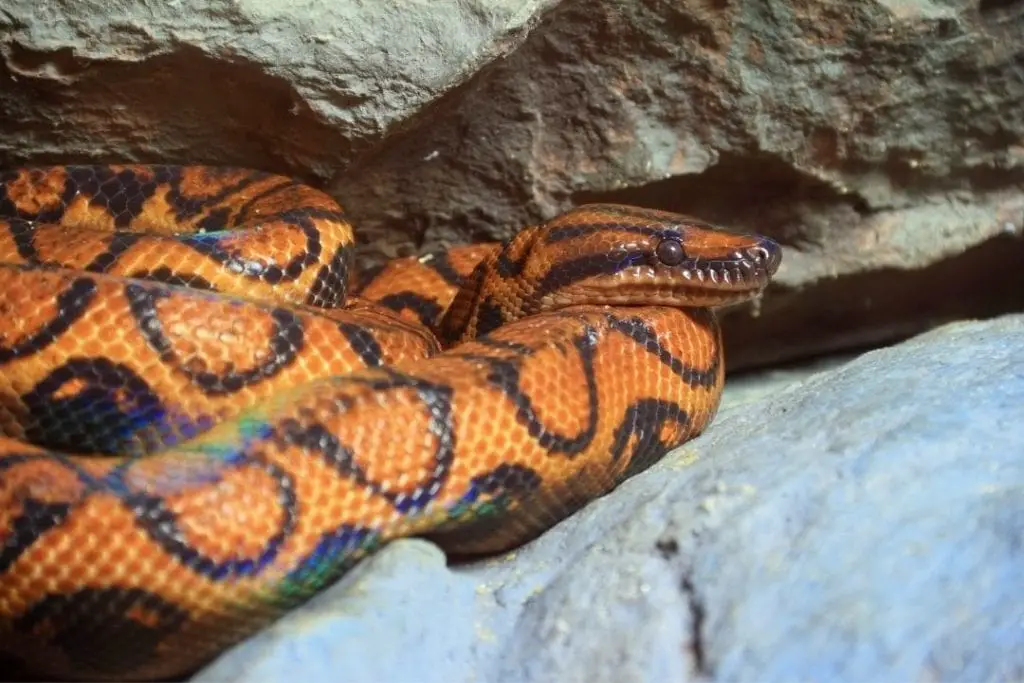
The biggest appeal of Brazilian rainbow boas is their beautiful scales. If you set up the enclosure well with nice lighting, you can enjoy the sight of the snake’s colors shifting as it moves around the enclosure.
They also stay don’t get as large as some species. They are fairly light for a boa and even a large female rarely tops 7 feet. Adult rainbow boas are fairly easy to handle.
Most will tolerate handling better than some of the nervous species of snake out there. These are very docile snakes that are great for a beginner to handle so long as you can get past the nippy baby stage.
They also rarely have feeding problems. A big stressor for a beginning snake keeper is a feeding strike. Ball pythons are infamous for refusing food for no reason whatsoever.
Many snake species from temperate climates will also stop eating in the fall. However, a sudden loss of appetite and weight loss are some of the biggest indicators of a serious health problem in snakes.
A beginner can easily miss this. Since Brazilian rainbow boas are tropical, they will not have a seasonal feeding strike and you can predict more accurately why they stopped eating if they do refuse food.
They tend to be less picky with prey as well, unlike ball pythons. Ball pythons typically pick a prey type and color and stubbornly refuse anything else.
Brazilian rainbow boas are more reliable when it comes to eating.
Should You Get a Brazilian Rainbow Boa?
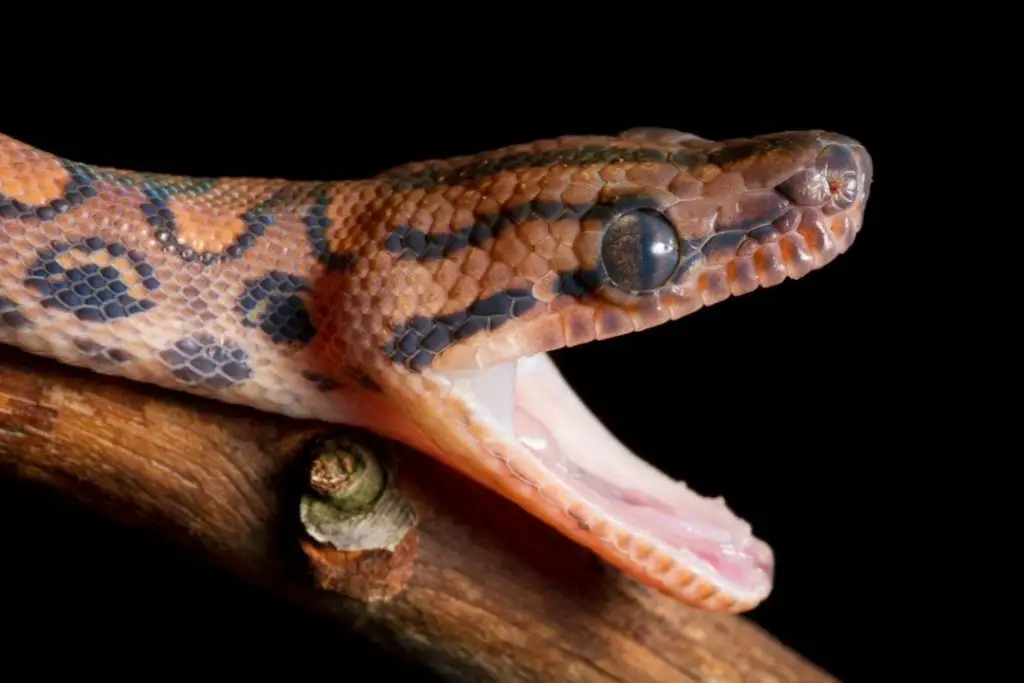
This depends on your abilities. Look up their care requirements and measure the space you have available for a reptile enclosure. If you can manage their humidity and temperature requirements, they make very good pets.
Just make sure you have the space since they need a 6-foot long enclosure for an average-sized boa. Make sure you can handle being bitten while your snake is young.
Watch videos on snake behavior and body language to help you spot problems early on. Be sure you are ready to invest in high-quality caging and equipment to give you the best chance of keeping this snake healthy.
They are also more expensive for the enclosure and the snake itself. Be prepared for this and know your limits.
If you don’t think you can handle owning one right off the bat, consider an easier snake like a corn snake. They are much more forgiving of mistakes and tend to be a bit hardier than a Brazilian rainbow boa.
Once you know you can keep the temperature and humidity in the right range, you may be ready for a more difficult species. Having experience in creating good enclosures and a caretaking routine will help prepare you to keep more sensitive species like Brazilian rainbow boas.
Conclusion
You should seriously consider your abilities before you commit to any animal as a pet.
It will rely entirely on you for decades, so know what you are getting into. Be honest with yourself and remember that your snake will suffer for your mistakes.
If you have any questions or comments, please leave them below. If you own a Brazilian rainbow boa, please leave your experience with the species in a comment.
